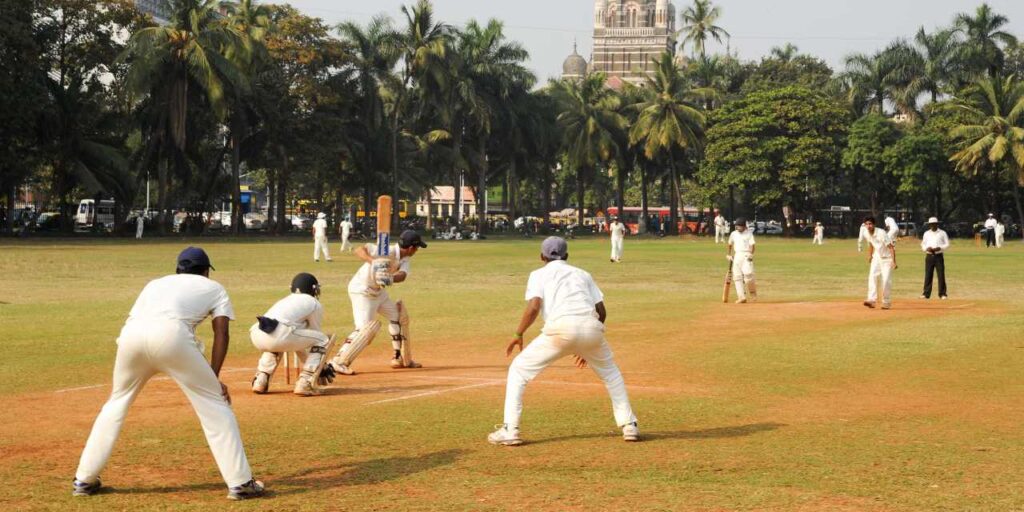Cricket is a team sport that involves two teams of eleven players. Many people around the globe follow the sport with great passion.
It’s a bat-and-ball game that is played on an oval-shaped grass field. In the middle of it is a 20.12m (22 yards long) flat area called a pitch. A set of wooden stumps is located at each end of the pitch, which is called a wicket. The wicket is sometimes also called the pitch.
A bowler from the fielding side (the pitcher) pushes a hard, fist-sized, cork-centred leather ball towards one of the wickets. The ball bounces usually once before it reaches a player of the opposing team (the bowler), who defends the wicket with a wooden cricket bat. To score runs, the batsman can run between wickets and exchange with the “non-striker”, a batsman who has been in an inactive position near the bowler’s wicket. The rest of the bowlers’ teams are placed around the oval as fielders.
For many centuries, cricket has been a team sport. It was developed in England in its current form and is very popular among former and present Commonwealth members. Cricket is the most popular sport in South Asia. This includes India, Pakistan, Sri Lanka, and Bangladesh. England, Wales, Australia and New Zealand all have a strong interest in cricket.
The game’s length (some test matches can last up to six hours per day for five days) and the numerous breaks for lunch and tea are important aspects that can confuse people not familiar with cricket. Hence the T20 format, which takes only 4 hours, has exploded in popularity in the last decade, especially through the IPL (Indian Premier League).

So how does the Cricket game work?
The batsmen aim to score as many runs as possible. One run is when both batsmen move successfully to their opposite ends of the wicket. The batsmen usually try to score runs only after the striker has hit a ball. However, this is not necessary.
The bowler’s goal is to get every batsman out. This is called a wicket or a dismissal. There are many ways to get out of a game. The most direct method is for the bowler not to be caught by the batsman and hit his stumps with a ball. This will dislodge the bails.
The fielders will try to knock off the bails from either set of stumps while the batsmen attempt a run. The fielders can also catch a hit ball before it touches the ground. The ball is considered “dead” if the batsmen stop trying to score more runs.
Once a batter is out, the next player in the team’s lineup replaces him. The batting team’s innings (singular), will be over when the tenth batter is out. There must always be at least two batsmen on the field. The team is considered to be finished when this happens. The two teams swap roles at the end of an innings.
Each over consists of six legal balls. The batting and bowling ends of each over will be switched and the bowler will be replaced by another member from the fielding side. This is also the time when the fielding positions and two umpires change.
The team with the highest total runs scored at the end of a match will be declared the winner. Different game types have different rules regarding the number and number of overs as well as the number and number of balls. Unexpected results include a draw if the last team to bat fails or the bowling team does not take 10 wickets within a time limit.